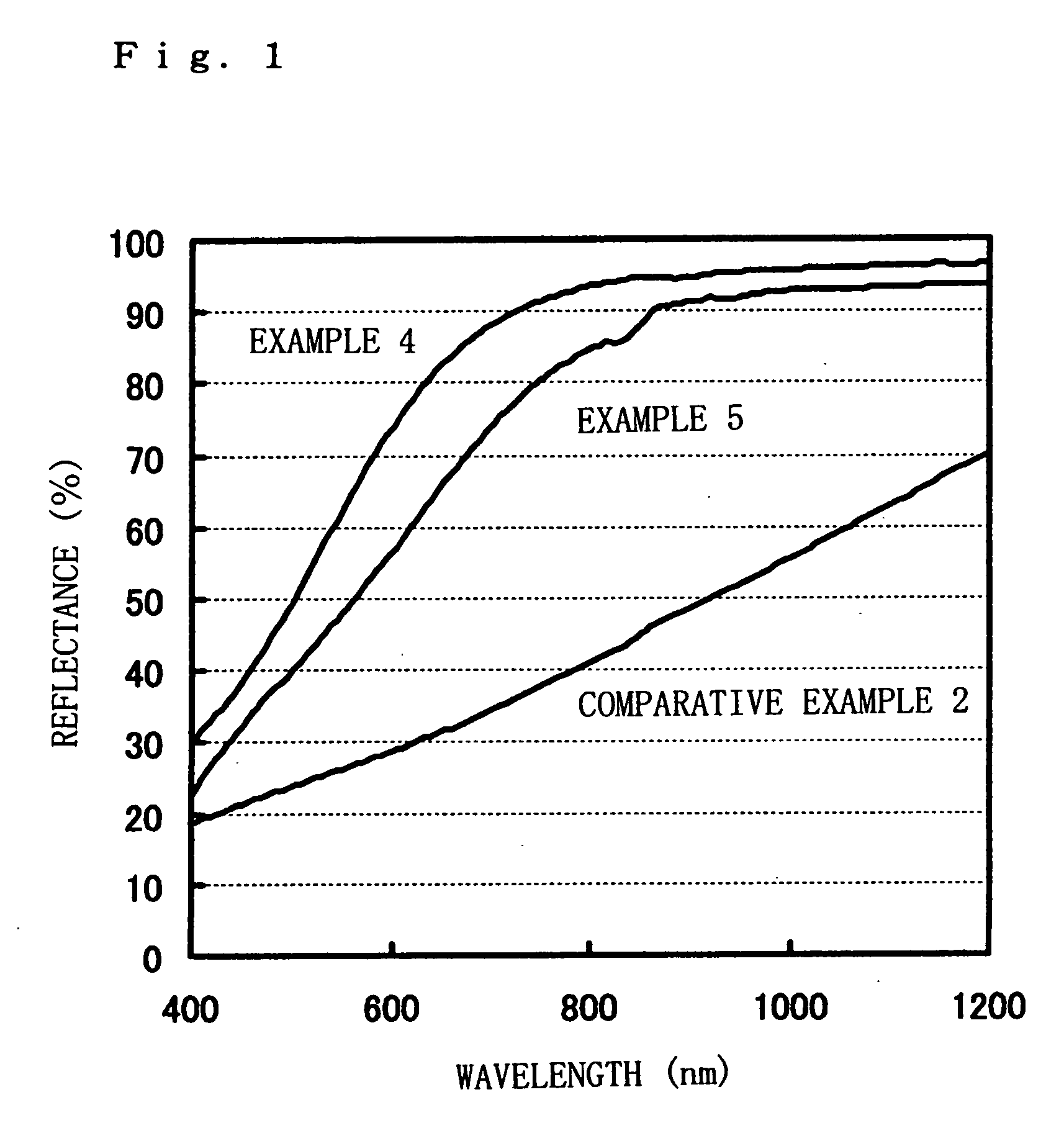Method for preparing liquid colloidal dispersion of silver particles, liquid colloidal dispersion of silver particles, and silver conductive film
a colloidal dispersion and silver particle technology, applied in the field of silver particle colloidal dispersion preparation, can solve the problems of high cost of fine silver particle colloidal dispersion paste, inability to easily make conductive silver film to be formed to have a low resistivity, and the method affords a very poor productivity, etc., to achieve high conductive film, simple and superior in productivity, and improve the effect of dispersion stability
- Summary
- Abstract
- Description
- Claims
- Application Information
AI Technical Summary
Benefits of technology
Problems solved by technology
Method used
Image
Examples
example 1
[0060] A mixed solution of 3,900 g of an aqueous 23.1% iron sulfate (FeSO4.7H2O) solution and 4,800 g of an aqueous 37.5% sodium citrate [C3H4(OH) (COONa)3.2H2O) solution and 3,300 g of an aqueous 9.1% silver nitrate (AgNO3) solution were mixed for 10 minutes at flow rates of 870 g / minute and 330 g / minute, respectively, by means of a static mixer (manufactured by Shin-yu Giken; one having the structure disclosed in Japanese Patent Application Laid-open No. H11-82919) to obtain a reaction fluid containing an agglomerate of fine silver particles. Incidentally, at the time of the above mixing, the mixed solution of an aqueous iron sulfate solution and an aqueous sodium citrate solution and the aqueous silver nitrate solution were set at liquid temperatures of 10° C. and 5° C., respectively.
[0061] From the above reaction fluid, the agglomerate of fine silver particles was filtered out by means of an centrifugal separator to obtain a cake of the agglomerate of fine silver particles. The...
example 2
[0065] The fine silver particle colloidal dispersion obtained in Example 1 was diluted with pure water to have an Ag concentration of 20%. A glass substrate (soda-lime glass of 3 mm in thickness) kept at room temperature was coated thereon with this fine silver particle colloidal dispersion (Ag: 20%) according to Example 2 by means of an applicator (gap: 125 μm), followed by drying and thereafter heat treatment at 115° C. for 60 minutes in the atmosphere. The conductive silver film according to Example 2, thus obtained, was 0.16 μm in layer thickness and 2.2 ω / square in surface resistivity.
example 3
[0066] A glass substrate (soda-lime glass of 3 mm in thickness) kept at room temperature was coated thereon with the same fine silver particle colloidal dispersion (Ag: 20%) as that of Example 2 by means of an applicator (gap: 125 μm), followed by drying and thereafter heat treatment at 95° C. for 120 minutes in the atmosphere. The conductive silver film according to Example 3, thus obtained, was 0.16 μm in layer thickness and 3.6Ω / square in surface resistivity.
[0067] From the results of Examples given above, the following is confirmed.
[0068] First, the fine silver particle colloidal dispersions according to these Examples are obtained by very simple methods, i.e., wet-process reaction and ultrafiltration, and hence can be produced at a very low cost. Also, because of the use of these fine silver particle colloidal dispersions, low-resistivity films can be obtained even when the films formed by coating and then dried are heat-treated at low temperatures of from 95 to 160° C. This ...
PUM
| Property | Measurement | Unit |
|---|---|---|
| Percent by mass | aaaaa | aaaaa |
| Percent by mass | aaaaa | aaaaa |
| Percent by mass | aaaaa | aaaaa |
Abstract
Description
Claims
Application Information
 Login to View More
Login to View More - R&D
- Intellectual Property
- Life Sciences
- Materials
- Tech Scout
- Unparalleled Data Quality
- Higher Quality Content
- 60% Fewer Hallucinations
Browse by: Latest US Patents, China's latest patents, Technical Efficacy Thesaurus, Application Domain, Technology Topic, Popular Technical Reports.
© 2025 PatSnap. All rights reserved.Legal|Privacy policy|Modern Slavery Act Transparency Statement|Sitemap|About US| Contact US: help@patsnap.com

